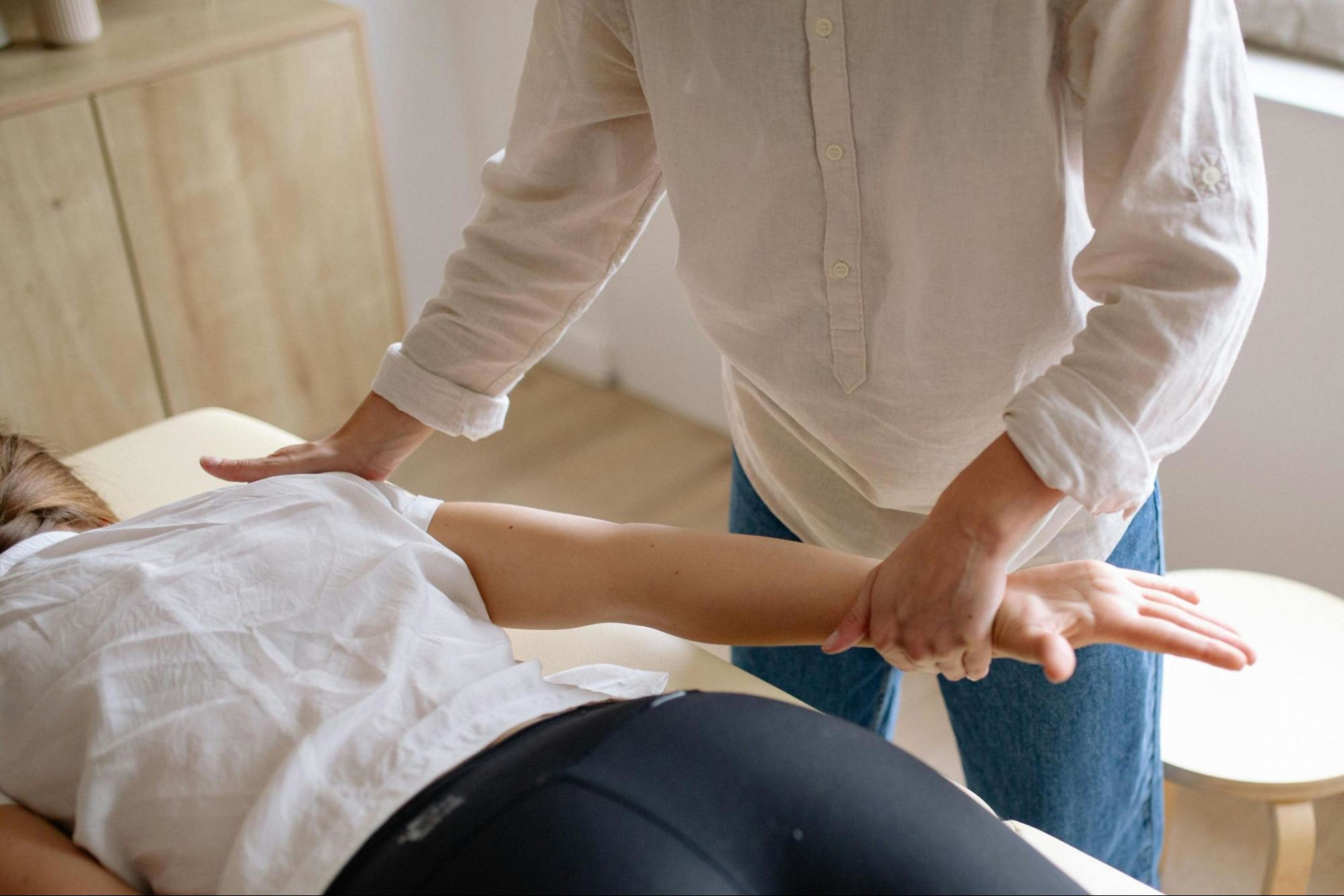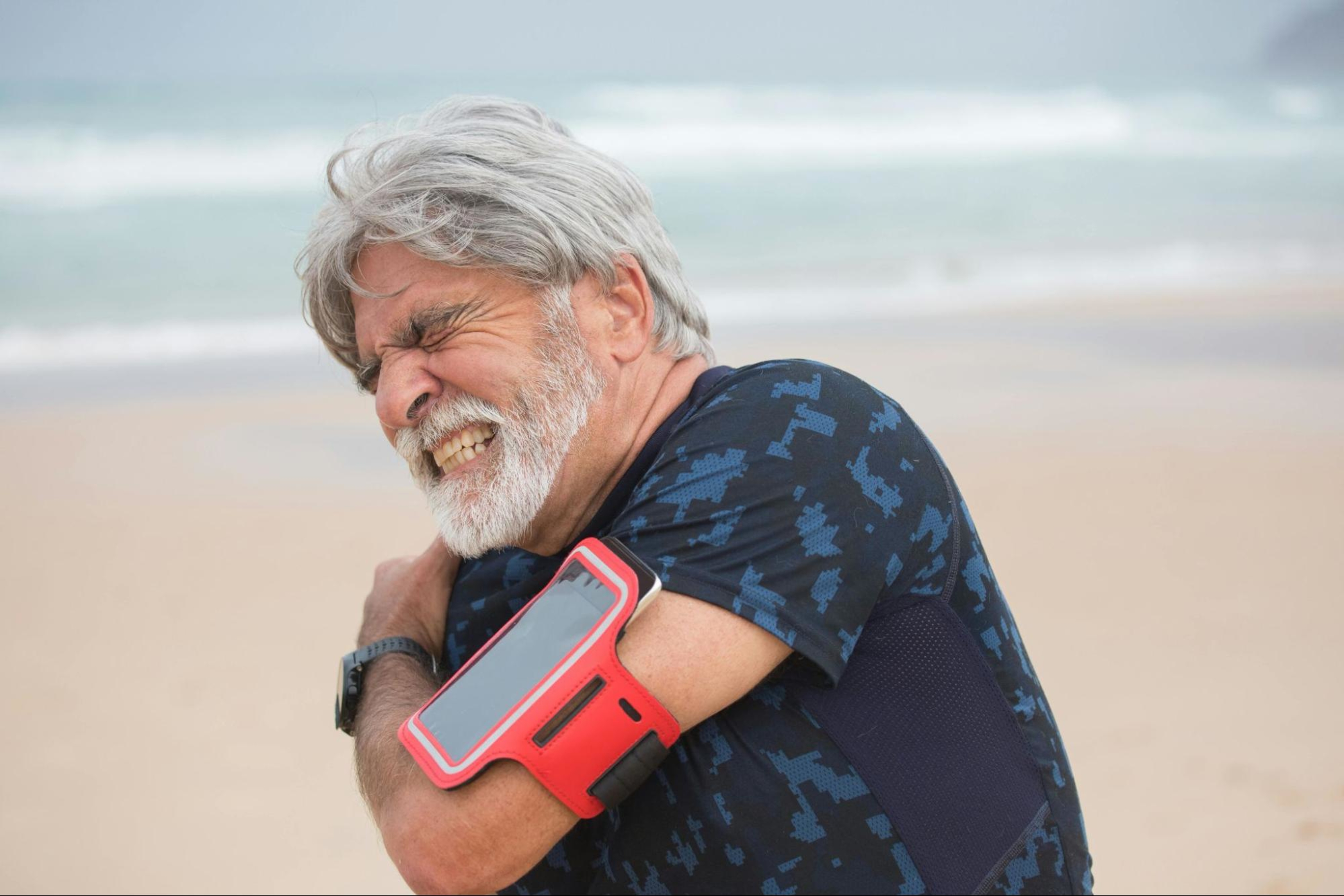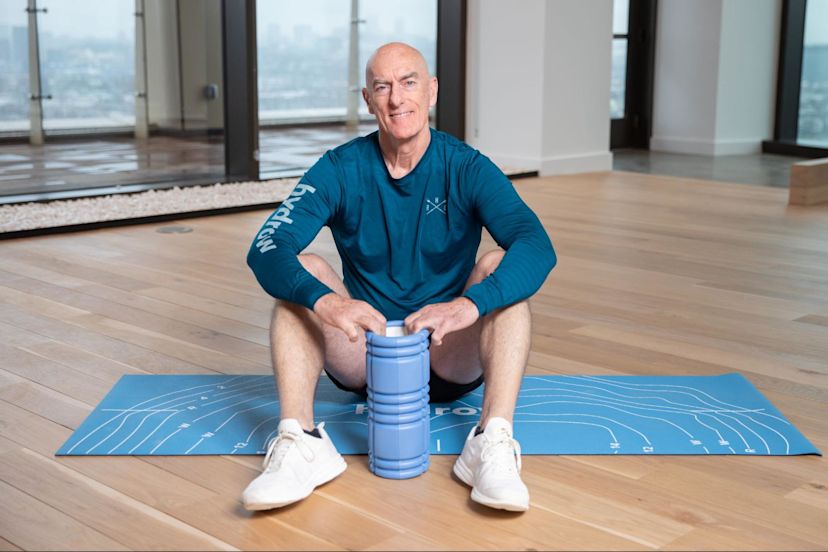10 Common Exercise Injuries and How to Prevent Them

Exercise is a fundamental pillar of a healthy lifestyle, offering myriad benefits for both physical and mental well-being. Regular physical activity can improve cardiovascular health, strengthen muscles and bones, enhance flexibility, boost mood, and reduce the risk of chronic diseases. However, as we challenge our bodies and push our limits, the risk of exercise-induced injuries becomes a real concern.
While the benefits of exercise far outweigh the risks, it's crucial to be aware of potential injuries and take preventative measures to ensure a safe and effective fitness journey. By understanding common exercise injuries and implementing a balanced fitness plan, you can minimize the risk of setbacks, prevent injuries and maintain a consistent, enjoyable workout routine.
In this blog post, we'll explore 10 common exercise injuries that athletes and fitness enthusiasts often encounter and how to prevent them, including:
Let’s dig in:
1. Muscle strains
Muscle strains, often referred to as "pulled muscles," occur when muscle fibers are overstretched or torn. They are among the most common exercise-related injuries.
Common areas affected: Muscle strains frequently affect the hamstrings, back muscles, and shoulders. These areas are particularly vulnerable due to their involvement in many exercises and daily activities.
How to prevent muscle strains:
Warm up properly: Start slowly. Always start your workout with a 5- to 10-minute warm-up to increase blood flow and prepare your muscles for activity.
Use proper form: Maintain correct technique during exercises to avoid unnecessary strain on your muscles.
Avoid sudden increases in exercise intensity: Gradually increase the difficulty and duration of your workouts to allow your muscles to adapt.
Stretch regularly: Incorporate stretching exercises into your routine—especially after workouts when muscles are warm—to improve flexibility and reduce the risk of strains.
2. Sprained ankles
Ankle sprains occur when the ligaments that support the ankle are stretched beyond their limits and tear. They're particularly common in sports that involve quick changes in direction.
Common areas affected: As the name suggests, this injury specifically affects the ankles.
How to prevent sprained ankles
Wear supportive shoes: Choose footwear that provides good ankle support, especially for activities that involve lateral movements.
Strengthen ankle muscles: Incorporate exercises that target the muscles around your ankles, such as calf raises and balance exercises.
Avoid uneven surfaces: Be cautious when running or walking on uneven terrain, which can increase the risk of ankle rolls.
3. Shin splints
Shin splints refer to pain along the shin bone (tibia) and are often caused by repetitive stress on the shinbone and the connective tissues that attach muscles to the bone.
Common areas affected: This injury affects the front of the lower legs.
How to prevent shin splints
Gradually increase activity levels: Avoid sudden increases in the intensity or duration of your workouts, especially running.
Wear proper footwear: Choose shoes with good arch support and shock absorption, and replace them regularly.
Avoid hard surfaces: When possible, run on softer surfaces like grass or a running track instead of concrete or asphalt.

Wondering if a Hydrow rowing machine is right for you? Get answers in our FAQ guide.
4. Tendonitis
Tendonitis is the inflammation of a tendon, often caused by repetitive motions or sudden increases in training intensity.
Common areas affected: This condition commonly affects the shoulders, knees, elbows, and wrists.
How to prevent tendonitis
Avoid repetitive movements: Vary your exercises to prevent overuse injuries in specific tendons.
Strengthen muscles around the tendons: Build up the supporting muscles to reduce strain on the tendons.
Rest between workouts: Take rest days. Allow adequate recovery time, especially for activities that stress particular tendons.
5. Runner's knee
Runner's knee, or patellofemoral pain syndrome, is characterized by pain around or behind the kneecap. It's common in runners but can affect anyone who participates in activities that stress the knee joint.
Common areas affected: This injury specifically affects the knees.
How to prevent runner’s knee
Strengthen leg muscles: Focus on leg exercises that build up your quadriceps, hamstrings, and hip muscles to provide better support for your knees.
Use proper running techniques: Maintain good form while running, avoiding overstriding and ensuring your feet land beneath your body.
Avoid sudden changes in intensity or terrain: Gradually increase your running distance or speed, and be cautious when switching to different running surfaces.
Use knee supports, if necessary: Consider using knee braces or tape for additional support during high-impact activities.
6. Lower-back pain
Lower-back pain is a common complaint among both athletes and sedentary individuals. It can range from a dull ache to sharp, debilitating pain.
Common areas affected: This injury affects the lower-back region.
How to prevent lower-back pain
Strengthen core muscles: Incorporate exercises that target your abdominal and back muscles to provide better support for your spine.
Use proper lifting techniques: When lifting weights or objects, bend at your knees and hips, not your waist, and keep the object close to your body.
Avoid excessive bending or twisting movements: Be mindful of your posture during exercises and daily activities.
Maintain good posture: Practice good posture throughout the day, whether sitting, standing, or exercising.
7. Plantar fasciitis
Plantar fasciitis is inflammation of the thick band of tissue that runs across the bottom of your foot, connecting your heel bone to your toes.
Common areas affected: This condition affects the soles of the feet, particularly the heel area.
How to prevent plantar fasciitis
Wear supportive running shoes or walking shoes: Choose footwear with good arch support and cushioning, especially if you spend a lot of time on your feet.
Stretch feet and calves: Regular stretching can help improve flexibility in your feet and lower legs.
Avoid running on hard surfaces: When possible, opt for softer running surfaces to reduce impact on your feet.
8. Stress fractures
Stress fractures are tiny cracks in a bone caused by repetitive force or overuse. They're common in weight-bearing bones of the lower leg and foot.
Common areas affected: Stress fractures frequently occur in the feet and shin bones.
How to prevent stress fractures
Gradually increase activity intensity: Avoid sudden increases in the volume or intensity of your workouts.
Ensure adequate calcium and vitamin D intake: These nutrients are crucial for bone health. Consider consulting a nutritionist to ensure you're getting enough.
Use proper footwear: Wear shoes appropriate for your activity that provide adequate support and cushioning.
9. Rotator cuff injuries
The rotator cuff is a group of muscles and tendons that surround the shoulder joint. Rotator cuff injuries include a range of symptoms, from mild inflammation to complete tears.
Common areas affected: These injuries affect the shoulders.
How to prevent rotator cuff injuries
Strengthen shoulder muscles: Include exercises that target all parts of the shoulder, including the often-neglected rear deltoids.
Avoid overhead activities without proper form: Be cautious with exercises like overhead presses and ensure you're using correct technique.
Stretch the shoulder joint: Regular stretching can help maintain flexibility and reduce the risk of injury.
10. Elbow injuries
Common elbow injuries include tennis elbow (lateral epicondylitis) and golfer's elbow (medial epicondylitis), which are forms of tendinitis affecting the tendons that connect the forearm muscles to the outer and inner parts of the elbow, respectively.
Common areas affected: These injuries specifically affect the elbows.
How to prevent elbow injuries
Avoid repetitive strain: If your sport or activity involves repetitive arm movements, take regular breaks and vary your routine.
Strengthen forearm muscles: Include exercises that target your forearm muscles to provide better support for your elbow joints.
Use proper grip techniques: Whether you're lifting weights, playing tennis, or typing, ensure you're not gripping too tightly, which can strain your elbow.
How to avoid common exercise injuries
While exercise is essential for maintaining good health and well-being, it's equally important to approach your fitness routine with caution and awareness. By implementing the preventative measures discussed for each of these common injuries, you can significantly reduce your risk and enjoy a safer, more effective workout experience.
In addition to the specific prevention strategies mentioned above, there are several general tips that can help you avoid exercise-related injuries:
Make sure that your body is properly fueled before a workout.
Stay hydrated.
Always warm up properly before exercising to prepare your body for physical activity.
Focus on maintaining proper form during all exercises to reduce unnecessary strain on your body.
Progress gradually in your fitness routine, allowing your body time to adapt to increased intensity or duration.
Prioritize rest and recovery, giving your body adequate time to repair and strengthen between workouts.
Use appropriate equipment for your chosen activities, including properly fitting shoes and supportive gear.
Remember, it's crucial to consult with your primary healthcare provider before starting any new exercise regimen, especially if you have pre-existing health conditions or concerns. This professional guidance can help ensure that your fitness plan is safe and appropriate for your individual needs.
Lastly, if you do experience an injury during exercise and the pain persists, don't hesitate to seek medical attention. Prompt treatment can prevent minor injuries from becoming more serious and help you return to your fitness routine more quickly.
By staying informed, taking preventative measures, and listening to your body, you can enjoy the numerous benefits of exercise while minimizing the risk of injury. Here's to your health, fitness, and injury-free workouts!

Explore Hydrow’s library of 5,000+ rowing, circuit training, yoga, Pilates, and mobility workouts.













